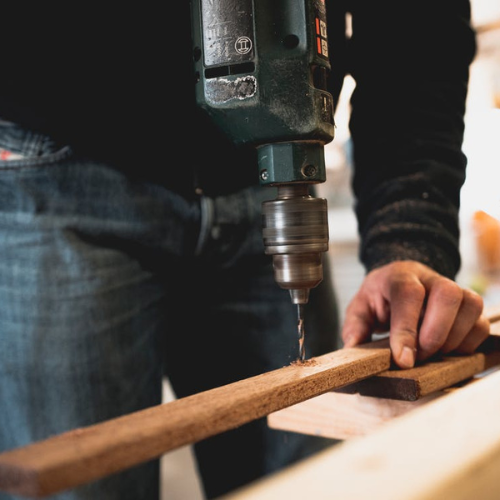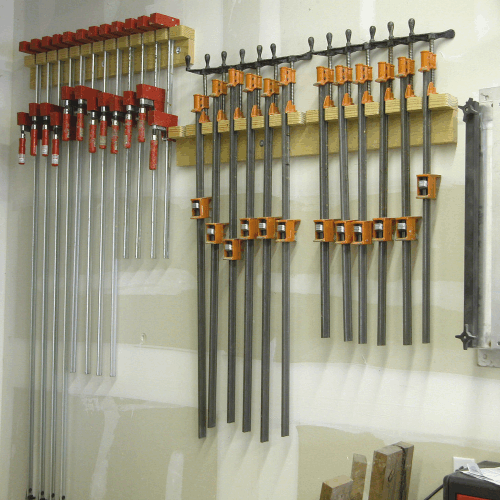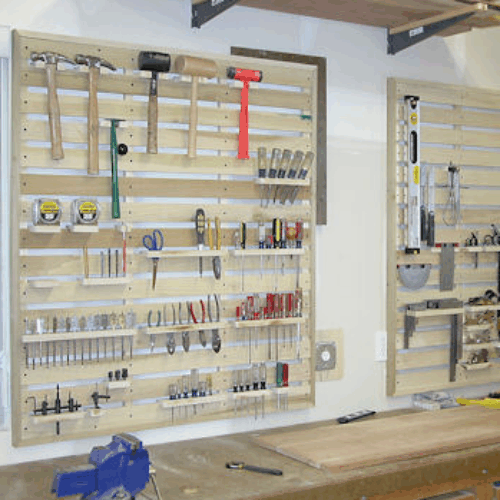Brad-point drill bits are your best friends as a woodworker. Not only are they unlikely to wander once you start drilling; they also offer sharp, clean cuts, and boast great dependability, as long as you buy the right ones.
But whys? And what factors should you consider when shopping fors?
Why Brad-Points?
The Brad- point drill bit is a compromise between a regular-point twist bit and a spade bit, featuring the grooved shank of the former and the flat-edged tip of the latter. However, a brad-point doesn’t wander like a regular twist bit and it’s outside cutting edge produces a very clean hole compared to a spade bit’s cutting edge.
This does not mean, however, that bBrad- points don’t come with their own compromises. They tend to be more expensive than either spade bits or general-purpose regular-point twist bits They’re also really only suited for wood and plastics, unless you invest in some really expensive bits. But for someone who intends to work mostly with wood, and who only needs to drill small, deep holes, brad- point bits are easily the best of the three.
Shopping for Brad-Ppoints
So, you know that brad pointbrad-points suit your purpose, but you still don’t know a lick about the factors to consider when going out to buying them. Don’t worry, because there are relatively few things to keep in mind, and they’re all fairly intuitive, and should come to you naturally as you go about the trial-and-error based process of shopping around. However, if you’d like to skip that process, and save yourself some time and some cash, we’d be glad to help. Let’s dive in.
SteelMaterial – Brad pointBrad-point drill bits come in a variety of materials for the woodworker. From softest to hardest, and ascending in price, these are: carbon steel, Stainless Steel, Chrome Vanadium, HHigh SSpeed Steel, Titanium-coatedtipped, Tungsten-tipped, cCarbide-tipped., Cobalt-tipped and Polycrystalline Diamond. Now, for even the hardest of hardwoods, chances are you can easily make do with High Speed Steeltungsten-tips, and they should be your go to. For long running jobs where numerous holes are drilled, carbide-tipped would last longer but are very hard to find. If you’re using anything harder than that, sure you’ll get extremely long-lasting tips, but you’d be spending money you don’t need to be. For softer woods, or MFD, you can even make do with carbon steel.Stainless Steel or Chrome Vanadium, al though we wouldn’t recommend them foron hardwoods. , they’d be too likely to break. Unless you’re drilling into exceptionally hard metals like black iron, chances are you won’t be needing anything on the tail-end of that list.
Measurement – As we mentioned earlier, brad pointbrad-point drill bits are smaller in diameter than spade and Forstner bits, and usually come in sizes ranging from 3/32 to 1-1/4 of an inches and under. For most manufacturers, the smallest bit available is 1/16th of an inch is too small to be brad-pointed., and differences of 1/64th of an inch are available, up to the full inch. Planning out your build well however, means you won’t necessarily have to buy a full set or have every bit on hand, and for most simple builds like small shelves, chances are you won’t need more than two different sizes. zes. We’d encourage Yyou might want to buy individual bits before you commit to a particular maker and purchase a full set.
BrandMake – A bad drill bit can ruin the finishing and sturdiness of a workpiece. e and take longer to do it. Long before you arrive at a finished workpiece, though, a bad drill bit will give you many signs of poor perfromance. If you purchase a set and your bits persistently wobble, or they don’t chuck properly, that’s always a bad sign. If you keep breaking bit after bit or you’re drilling lop-sided holes, chances are your bits just aren’t true and so are prone to shattering. If you’re noticing that your bits are heating up too much, you’re either running them too fast for your material, or that you have poor quality bits on your hands. The point is you need to be able to tell what was and wasn’t a good purchase, and this is usually not something that becomes apparent right after your first job with a particular bit. How quickly a bit wears out or dulls is a big part of what should help in inform your buy decision.n to buy.
And that’s it. Drill bits might not be boring (well, actually they are boring), but they certainly aren’t rocket science. As long as you’re attentive towards the three considerations we pointed out, you should be able to find the right bit for the job.
Beyond the Bbit
But the right bit is, quite literally, only a bit of the solution when it comes to athe perfect build. There are a variety of other factors that affect the quality of your finished piece.
First, and help you to make the most of your quality drill bit. cCertain materials are not meant for drilling with handhelds and and should only be attempted on a drill press where they can be better securedsecured via hold downs, ensuring both that the workpiece is held firm, and that the bit strikes the material at a perfectly perpendicular angle. As with all kinds of craftsmanship, or anything involving the use of power tools, there is’s a lot of trial and error involved with finding the right setup.
Second, accurately marking the piece being drilled is of upmost importance. A sharp leaded pencil or fine-tipped pen should be used to create the thinnest line possible. Don’t use the old oblong carpenter’s pencil. Those are made for rough framing. It also pays to pre-punch the exact point where the tip of the brad-point drill bit should go. Trying to hit the point while a hand drill or drill press is running makes it much more difficult without pre-punching. When pre-punched, you can feel and see better when you are in the right place while the bit is turning. A spring-loaded punch is best when pre-punching.
As a woodworker, wWe just hope that we have ’ve helped you figure out how to build a near perfect project and the best drill bits to do so. If you’re in the market to buy brad-point drill bits, we recommend those made by WL Fuller at this link.ow to go about optimizing just one aspect of yours.






